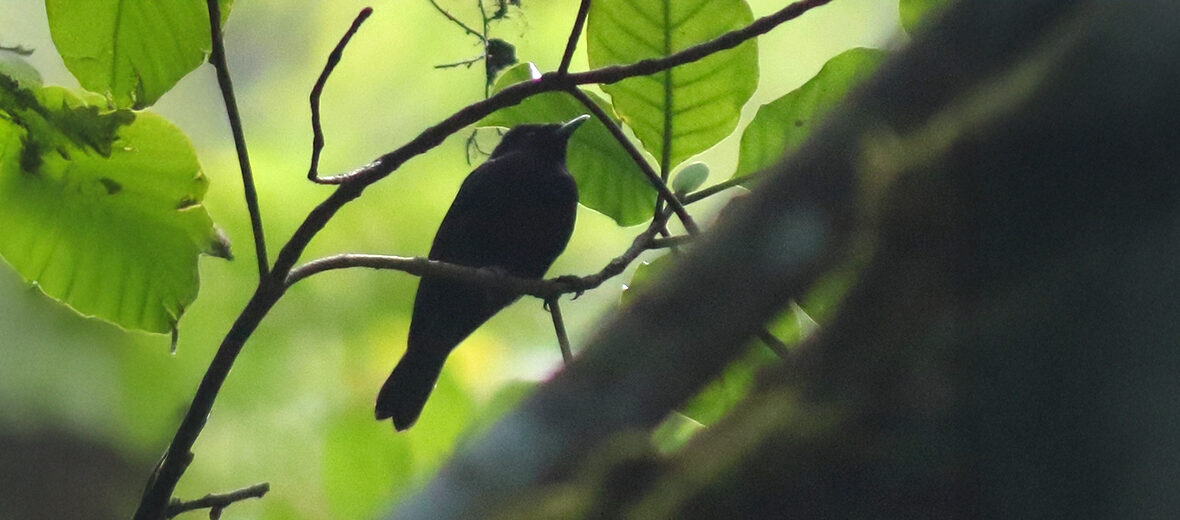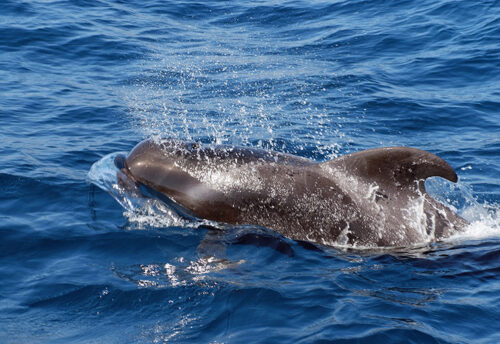
The Tahiti monarch, aka Tahiti flycatcher, is an increasingly rare sight to see in Tahiti, the largest island in French Polynesia. They are a species of bird in the monarch flycatcher family. Sadly, these birds face the threats of native and invasive species; diseases; and severe storms as a result of climate change. The IUCN lists this dwindling species as Critically Endangered. Their population trend is listed as decreasing.
First the Stats…
Scientific name: Pomarea nigra
Weight: Up to .71 ounce
Length: Up to 5.91 inches
Wingspan: Up to 8 inches
Lifespan: Up to 12 years
Now on to the Facts!
1.) There are only an estimated 91 wild individuals remaining.
2.) Their calls are a melodious flute-like song and a rather distinctive “tick-tick-tick” sound.
3.) They were formally named Muscicapa pomarea by René-Primevère Lesson and Pierre Adolphe Lesson Garnot in 1828, based on both specimens and information gathered during the Voyage de la Coquille from 1822 – 1825.
4.) These birds were later re-classified as their own species (Pomarea nigra) in 2012.
5.) Tahiti monarchs prefer to dwell in the canopies and understories of forests among mara trees, the last native tree remaining on the island.
But wait, there’s more on the Tahiti monarch!
6.) They can be found at elevations of up to 13,123 feet.
7.) These critters feast on a variety of insects.
Did you know…?
Efforts towards managing invasive birds and rats were found to increase the reproductive success of the Tahiti Monarchs.
8.) These monogamous (mate for life) birds share nest building, incubation duties, and chick rearing amongst both the male and female.
9.) Females lay just a single egg that hatches in up to 17 days. The chick fledges in up to just 3 weeks.
10.) Black rats, common mynas, and red vented bulbuls extensively prey on the eggs and chicks of these birds.
Now a Short Tahiti Monarch Video!
Be sure to share & comment below! Also, check out the Critter Science YouTube channel. Videos added regularly!

Want to suggest a critter for me to write about? Let me know here.
Some source material acquired from: Wikipedia & IUCN
Photo credit: iNaturalist



